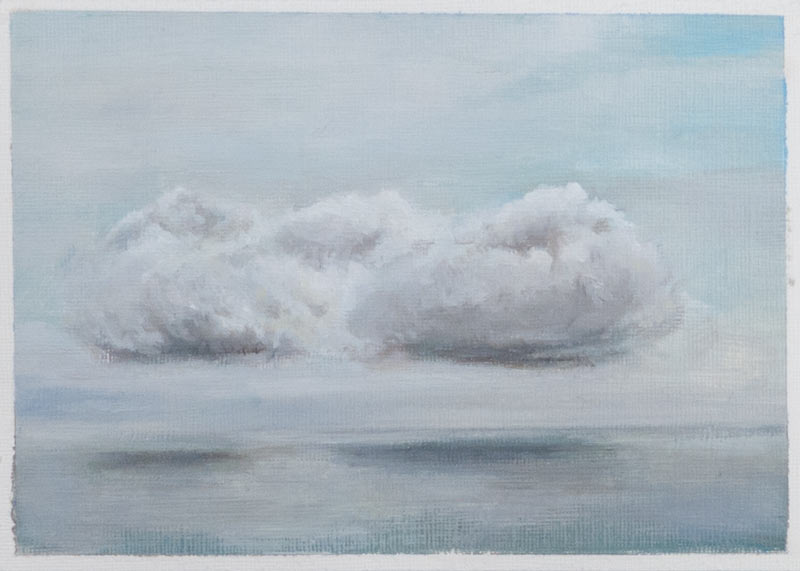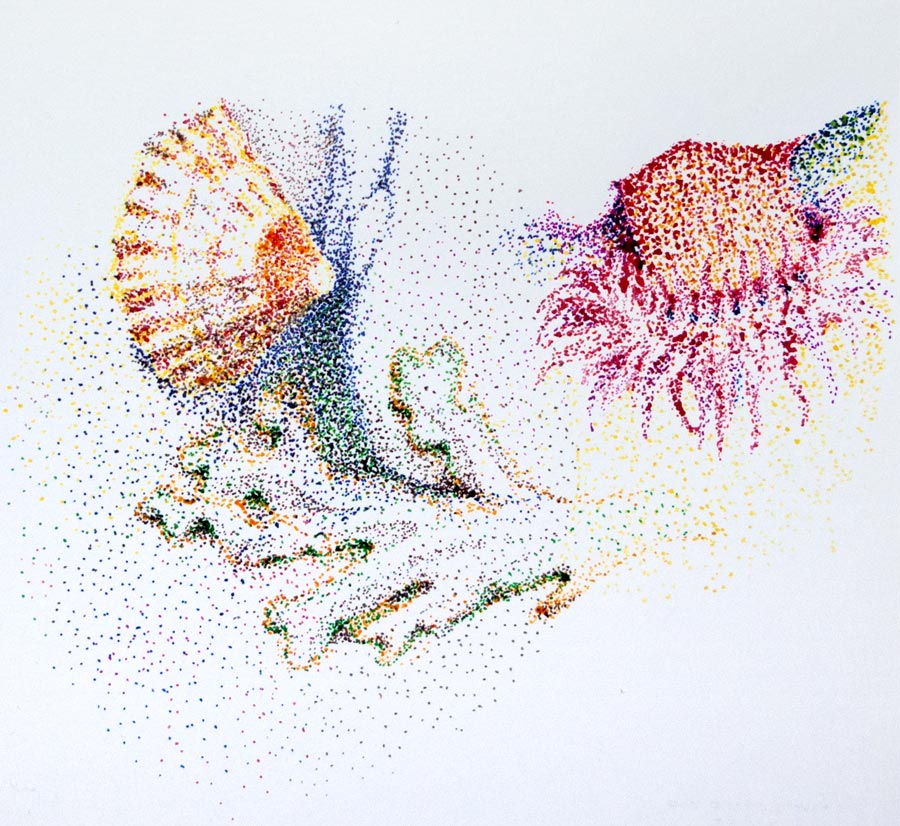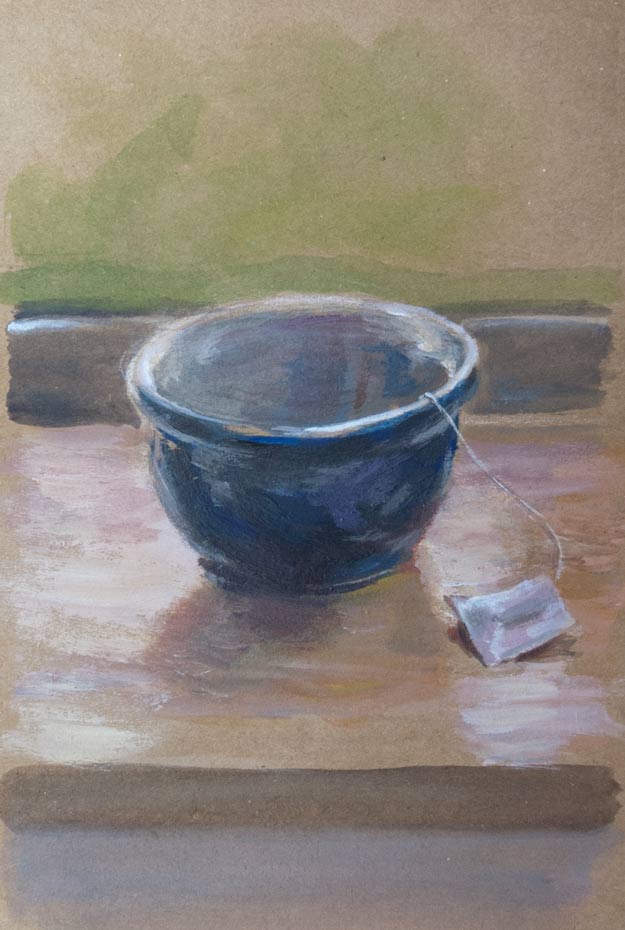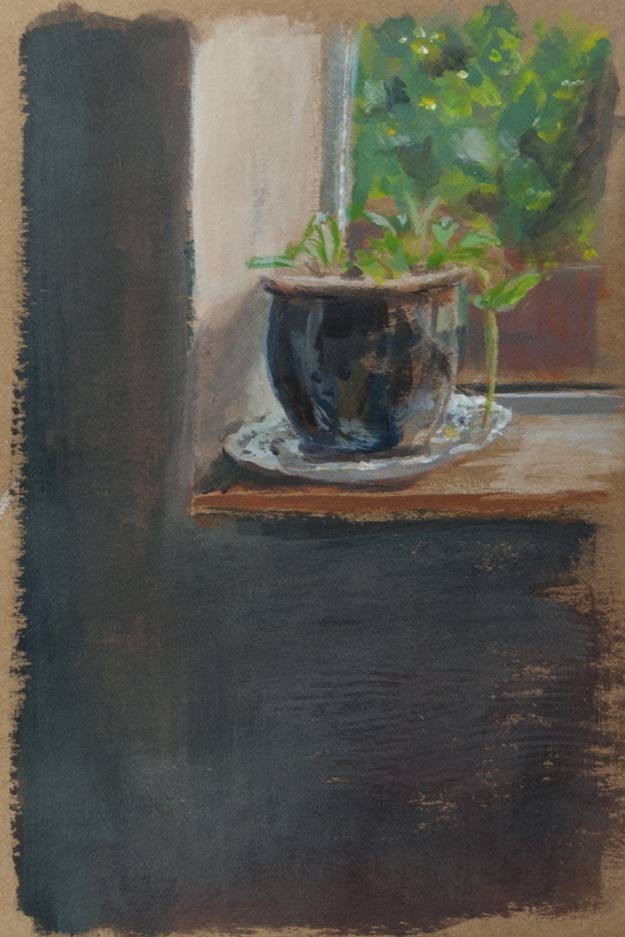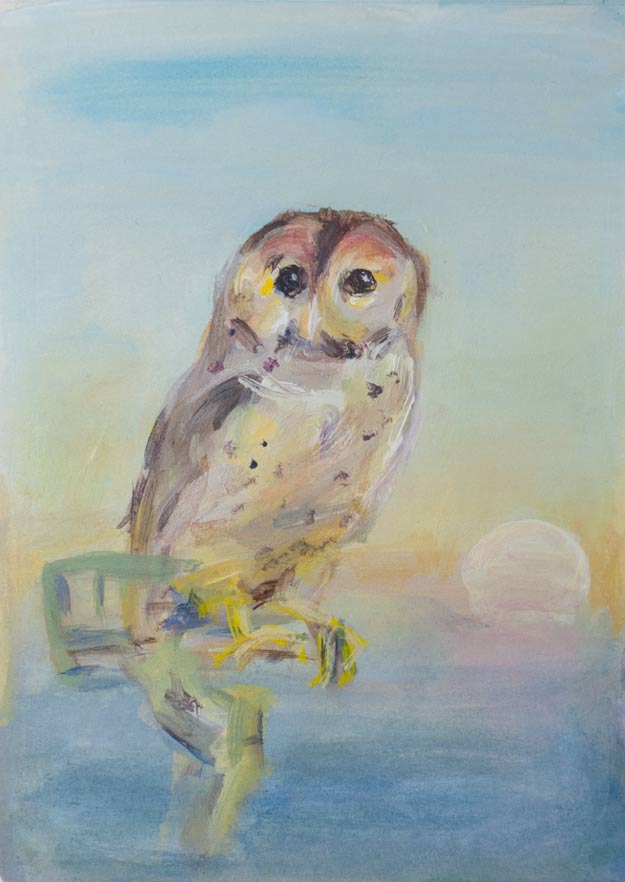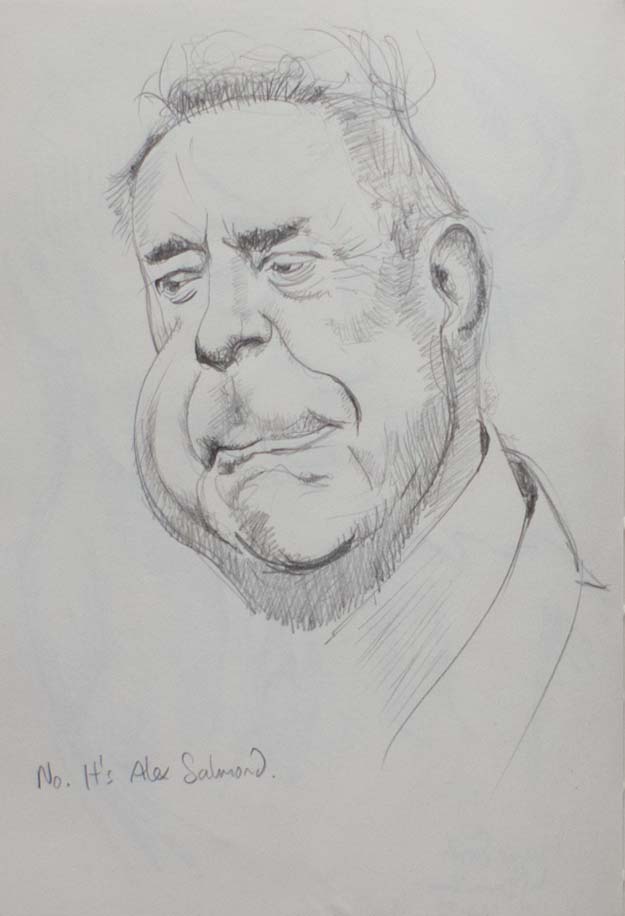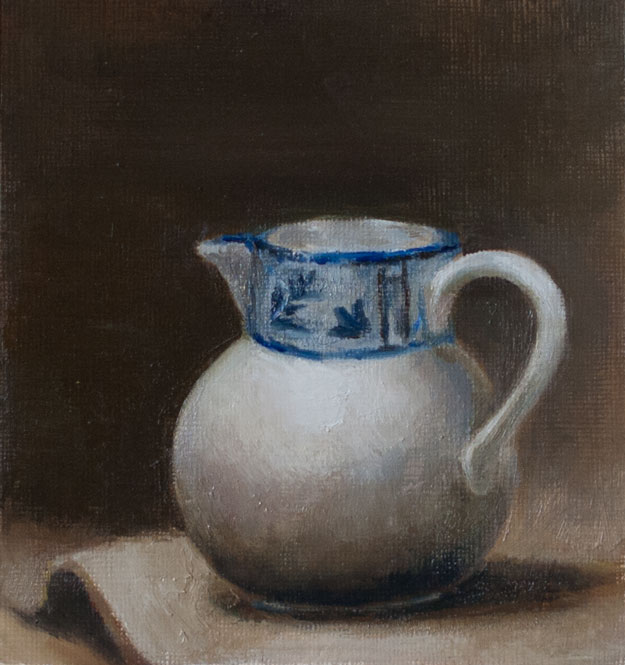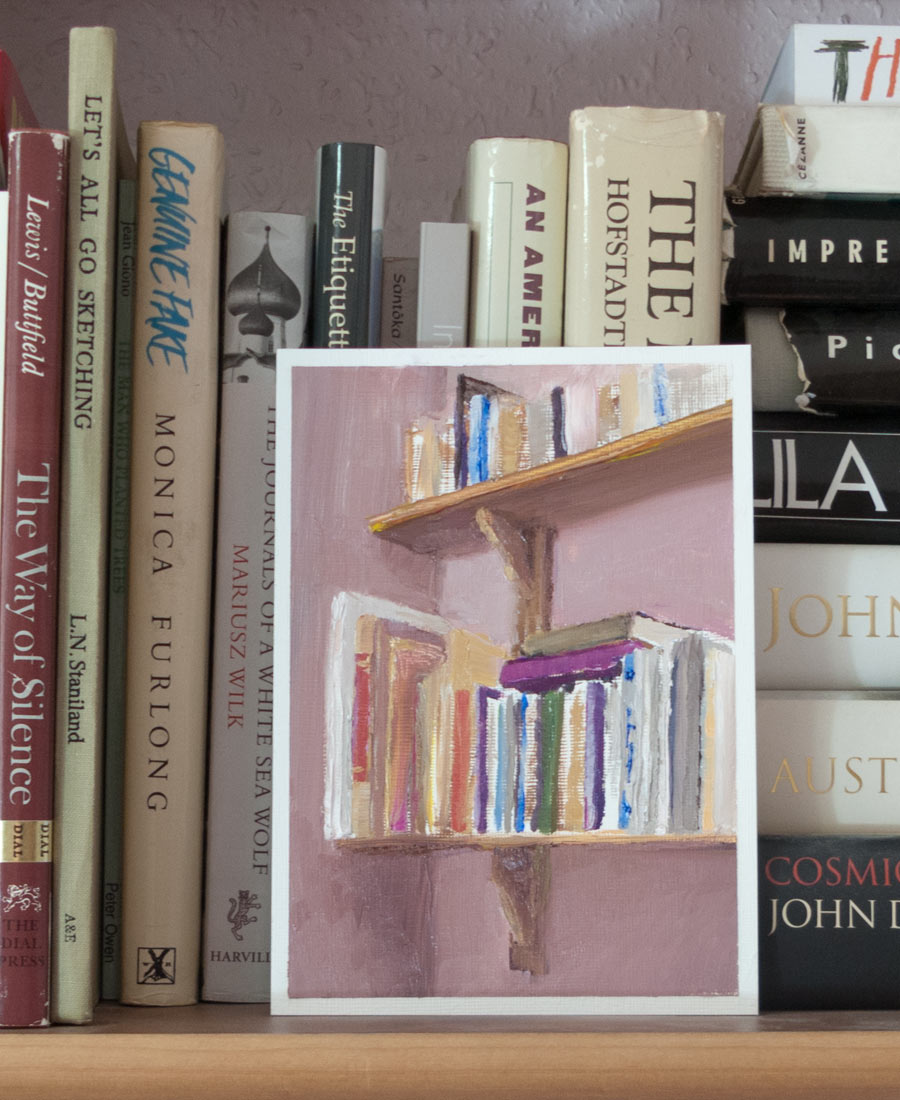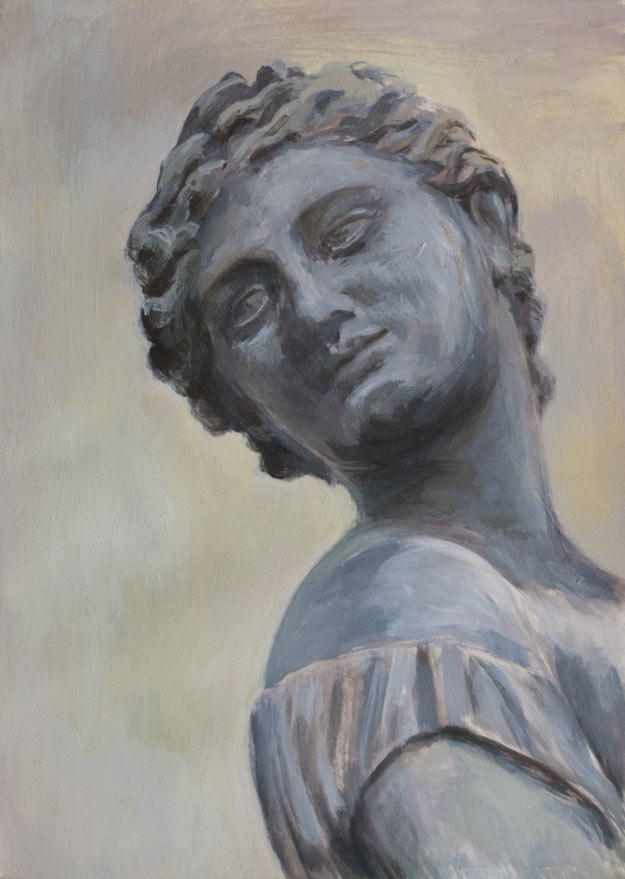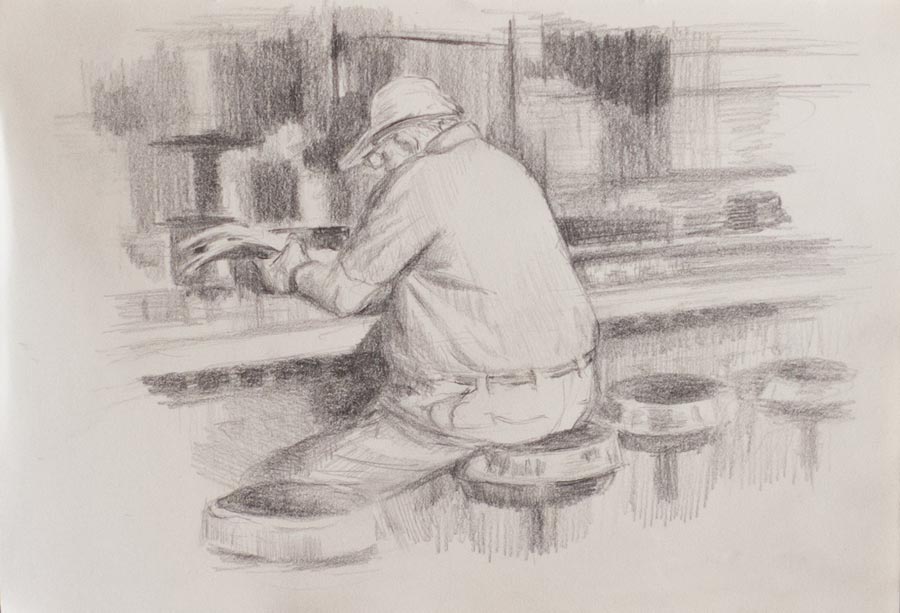
After reading Color and Light by James Gurney, I’ve been trying to track down a copy of The Artist’s Guide to Sketching, an earlier book he co-wrote with Thomas Kinkade. Unfortunately it is out of print and the second-hand prices have gone crazy. Then I remembered we still have public libraries in this country and reserved a copy for a humble pound.
One of the tips he gives is to spend some time drawing small thumbnail sketches of the scene instead of beginning the drawing right away. This gives the chance to try out different compositions and experiment with areas of focus. But for me the most useful result of making these thumbnails is that it creates enough time to look at the subject before committing to a drawing. Once I’ve decided on a subject, the urge to start sketching right away is near irresistible, with the result that the composition often suffers. Just looking at the scene without drawing anything I find very hard, so scribbling thumbnails satisfies the need to be making marks immediately. By creating a number of empty rectangles you’re forced to reassess the scene a number of times, giving the eye a chance to discover the important features while giving the impatient hand something to do.
In the sketch above, I was drawn to the shapes between the three trees in the foreground, but only after the time spent drawing thumbnails did I realise that the empty sunlit space in the middle distance to the left, with the path leading off through the avenue of trees, is what attracted me to the tree shapes to begin with.
